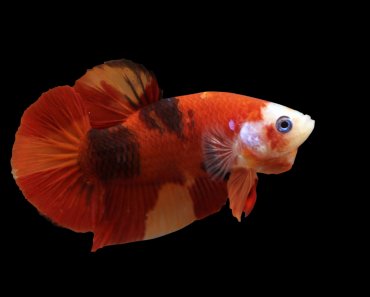
For original article click here
When you see evidence of cockroaches in your home, your first inclination may be to reach for the strongest bug spray you can find. But before you do, take a deep breath and think again. While pesticides will likely kill whatever unwanted visitors are infesting your home, they can also be harmful to you and your family.
Children are especially susceptible to harm from pesticides, because their bodies and immune systems are still developing. They are also more likely to be exposed to pesticides by crawling on the floor and putting their hands and other objects in their mouths.
But household pests can also be a danger to your family. Cockroaches produce allergens that can trigger asthma and allergies. Mouse droppings can also trigger asthma or allergies. Flies and mosquitoes can carry germs and diseases.
Fortunately, there are ways to control pests and keep your family safe, too. Following an approach called integrated pest management (IPM) can do both — and also benefit the environment. Here are a few suggestions for safer pest control.
Pest Control: Practice Prevention First
The first step in IPM is prevention. The best way to control pests is to make your home unappealing to them. Just like us, pests need water, food, and shelter to survive, and if they can’t find these in your home, it’s likely they’ll go elsewhere.
Take these steps to discourage pests:
• Pick up all food spills and crumbs right away.
• Keep your counters, tables, sinks, and floors clean. Clean and dry dishes after having meals or snacks.
• Clean under large kitchen appliances, such as refrigerators and stoves. Food debris can often collect in these spaces and attract pests.
• Store food in containers with airtight lids or in the refrigerator. If food is stored in cardboard boxes, make sure the boxes are sealed. Cockroaches like cardboard and can get into opened boxes easily.
• Keep your trash in a container with a tight lid, and take out the trash often. Place outdoor trash bins as far from your house as possible.
• Fix household leaks and clean up any excess moisture on counters or sinks right away. Cockroaches like water and can swim.
Continued
• Try to keep your home free of clutter. Piles of magazines, newspapers, and boxes can attract pests and provide a place for them to hide.
• Vacuum carpets and cracks and crevices regularly.
• Don’t leave pet food out overnight.
• Fix any screens that have holes to prevent pests from entering.
• Check for any openings or cracks where pests may enter your house, such as behind sinks, along baseboards, and around windows. Seal them.
• If carpenter ants are a problem, look for damaged or wet wood and replace it. Carpenter ants are often attracted to damaged wood.
Check the foundation of your home for openings larger than one-quarter of an inch and seal them.
Choosing a Pesticide
If you’ve already tried prevention techniques and you still have a pest problem, you may need to use some kind of pesticide to treat the area. But first, be sure that you know what kind of pest you’re trying to eliminate. For example, if you’re not sure whether you have carpenter ants or termites, get help identifying the pest from your local extension service or exterminator.
Knowing what type of pest you’re dealing with will help you choose the right kind of pesticide for your problem.
The next step is to choose a pesticide that will work against the specific kind of pest you have and pose the least threat to your own health. Bait traps are often a good way to start. These are small plastic cups that attract pests with food mixed with an insecticide.
Using a bait trap allows you to confine the insecticide to a small area, rather than spreading it around. However, you’ll still need to take care that kids and pets can’t get into the bait traps. Tamper-proof bait traps are available and lower the risk of accidental exposure to the pesticide. You can buy bait traps made specifically for most household pests.
Pest Control: Playing It Safe
If you choose to use another type of pesticide, keep the following safety tips in mind:
Continued
• Be sure the pesticide will work on the type of pest you are trying to eliminate.
• Always read the label before use, and follow the directions carefully. Never use more than directed.
• Look for a product that is already mixed, rather than a product you have to mix yourself.
• Never use a pesticide indoors that is meant to be used outside.
• Apply pesticide to the smallest possible area, rather than over an entire room.
• Before applying pesticide, remove children, pets, toys, and food from the area. How long should they stay out? Check the pesticide’s label — it should tell you.
• Open the windows to air out the room after applying pesticides.
• Wear gloves, long pants, and sleeves to protect your skin when using pesticides. Wash your clothes and take a shower after you’re done.
• Only buy the amount of pesticide you need to use right away. If you have leftover pesticide, store it in the original bottle, out of the reach of children and pets.
• Don’t put leftover pesticides down your drain or in the trash. Follow the label instructions to dispose of it correctly.
• Never use an empty container of pesticide for any other purpose.
Pest Control: Keeping It in Perspective
No matter what type of insecticide you use, you may not be able to get rid of pests completely. And even the strongest pesticides won’t continue to work over time if pests find easy access to food and water in your home. But by following basic prevention tips and using pesticides sparingly when needed, you will likely be fine.
WebMD Medical Reference Reviewed by Amita Shroff, MD on October 29, 2018
Sources
SOURCES:
EPA web site: “Protecting Children From Pesticides;” “Play It Safe: Reduce Your Child’s Chances of Pesticide Poisoning;” “Pesticide Safety Tips;” “The Inside Story: A Guide to Indoor Air Quality;” “Cockroaches and Pests;” “Preventing Pests at Home;” and “Do’s and Don’t’s of Pest Control.”
University of California Agriculture and Natural Resources web site: “Pesticides: Safe and Effective Use in the Home and Landscape.”
American Lung Association web site: “Cockroaches and Pests.”
New York State Department of Health web site: “Mouse Control.”
Washington State Department of Health web site: “Biting and Stinging Bugs.”
Cornell University web site: “IPM for Homes.”
© 2018 WebMD, LLC. All rights reserved.
For original article click here


























